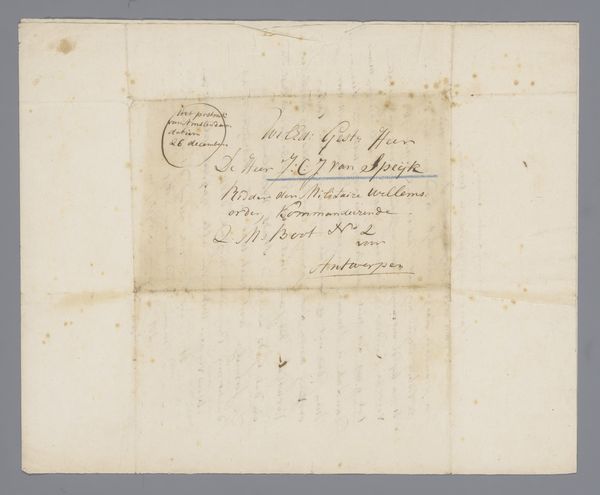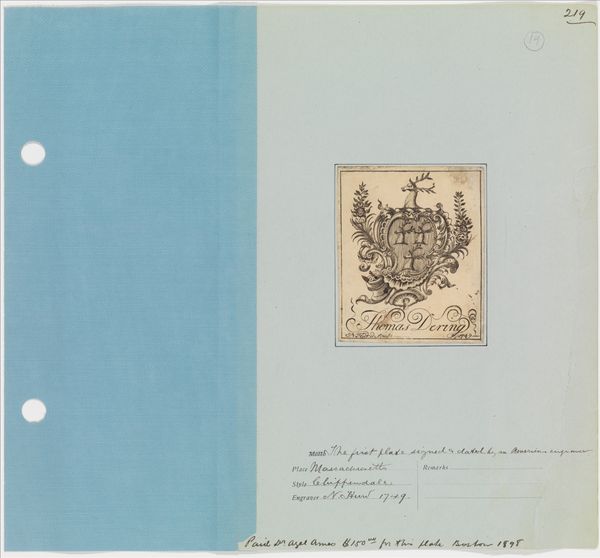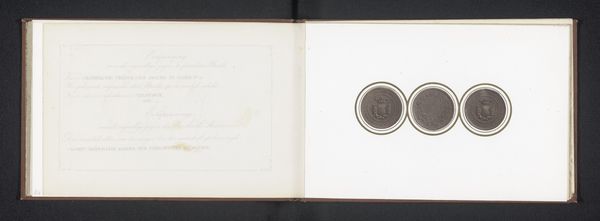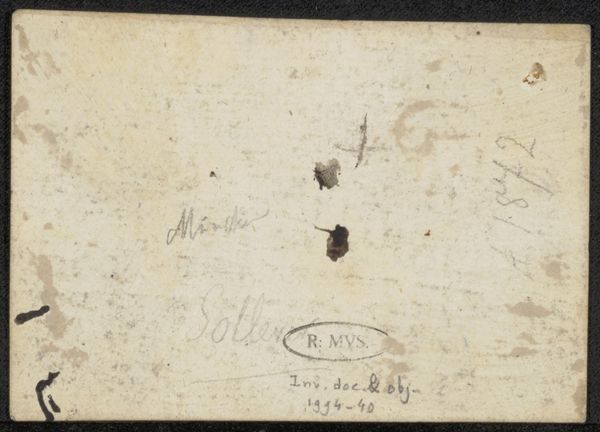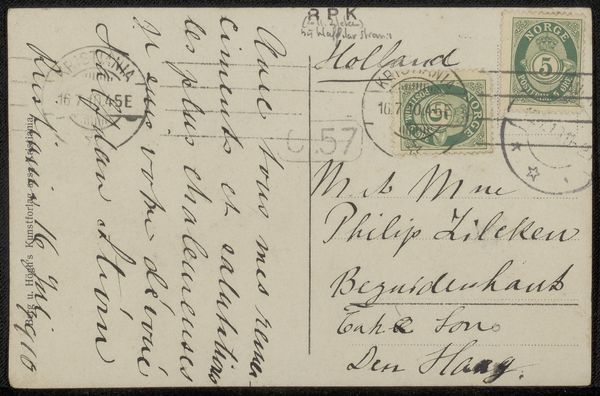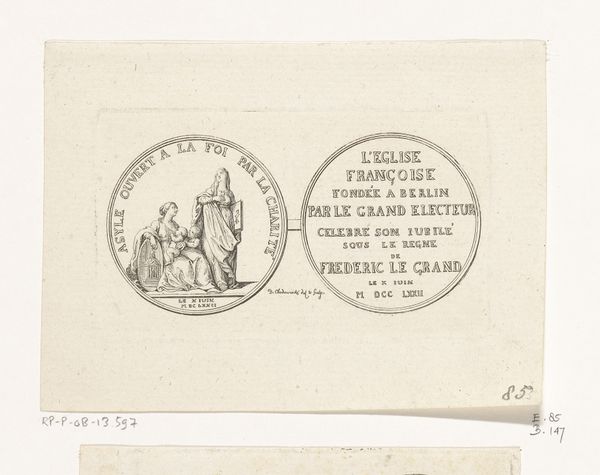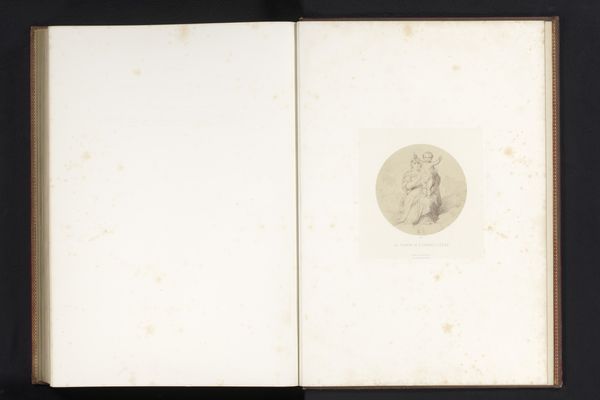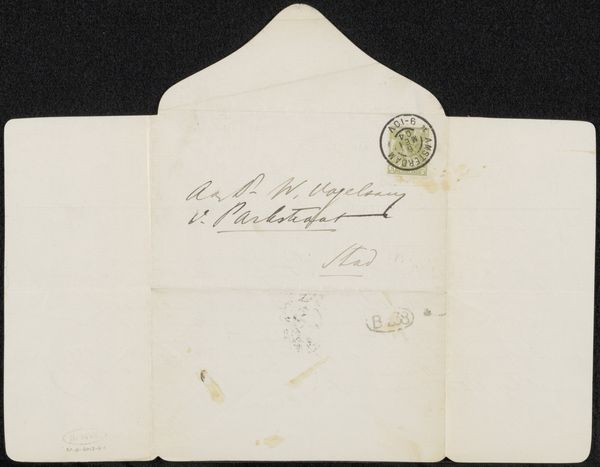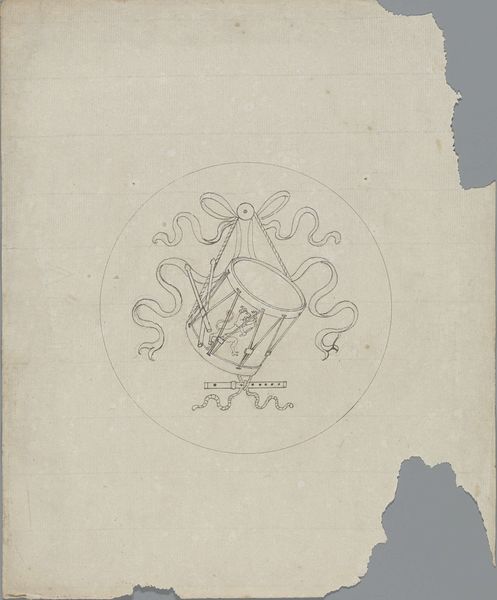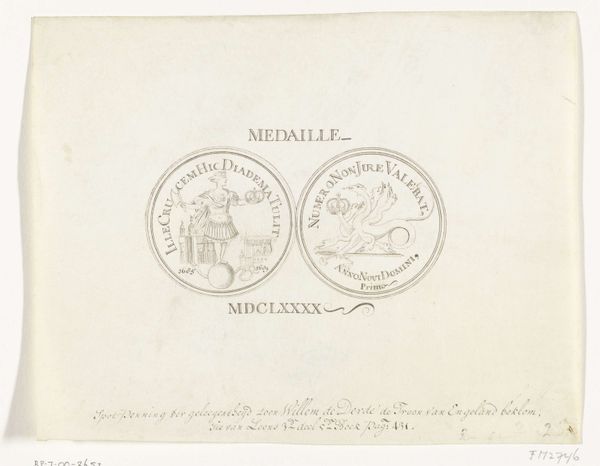
Ontwerpen voor een historiepenning voor raad, schepen en oud-burgemeester van Haarlem Pieter van der Camer 1743
0:00
0:00
drawing, paper, ink
#
drawing
#
aged paper
#
dutch-golden-age
#
light coloured
#
sketch book
#
hand drawn type
#
personal journal design
#
paper
#
personal sketchbook
#
ink
#
journal
#
sketchbook drawing
#
storyboard and sketchbook work
#
sketchbook art
Dimensions: height 172 mm, width 111 mm
Copyright: Rijks Museum: Open Domain
Curator: So, what we're looking at is a drawing from 1743. It's titled "Ontwerpen voor een historiepenning voor raad, schepen en oud-burgemeester van Haarlem Pieter van der Camer," which roughly translates to "Designs for a historical medal for the council, aldermen, and former mayor of Haarlem, Pieter van der Camer." The artist is currently unknown, and it's created with ink on paper. Editor: My initial impression is one of restrained elegance. It feels quite academic, almost like a carefully annotated page from a scholar's journal. There's a simplicity here that draws you in, even though the subject matter sounds rather formal. Curator: Indeed. Medals like these were often commissioned to commemorate significant civic achievements or figures. The design would then be struck in precious metal to honor the recipient and underscore his legacy. Editor: It’s interesting to think about how commemorative objects, often steeped in officialdom, actually reflect prevailing power structures. A medal isn't just a shiny thing; it’s a symbolic reward reinforcing social hierarchies. Do we know what specific event this medal was intended to mark? Curator: Not specifically. Van der Camer held several prominent positions in Haarlem. These preparatory sketches reveal fascinating insight into the design process and allow the chance to interpret the symbols from that historical context. You see the Haarlem coat of arms. Also, note the careful lettering and detailing, it shows that a great deal of thought went into its construction. Editor: The use of ink provides such delicacy to the intricate designs. It speaks volumes about the artistry involved in something that might initially seem merely functional. The faded quality of the paper lends it an almost dreamlike essence, giving the figures depicted an ethereal air. It’s like glimpsing a memory. Curator: Absolutely. The "Dutch Golden Age" aesthetic contributes to the artwork's formal dignity. It provides viewers with not only a piece of local historical perspective, but an idea of what life might have looked like for the Dutch at that time. Editor: Seeing art like this is grounding. To view artifacts, that serve as a historical reminder to those of us seeking to push our ideas today, helps keep our mission clear. Curator: Precisely. It serves as a timeless bridge connecting past to present, reminding us of the enduring significance and influence of public legacy in our lives today.
Comments
No comments
Be the first to comment and join the conversation on the ultimate creative platform.
